Shows

Fernstudi.fmWie man die Skriptberge an der FernUni überlebt – David Lensing über Journaling & PhilosophieWas macht das Menschsein aus – und wie kann man das Fernstudium nutzen, um sich persönlich weiterzuentwickeln?
David Johann Lensing, Content Creator sowie Philosophie Master-Absolvent der FernUni Hagen und aktuell in Wirtschaftsinformatik immatrikuliert, teilt in diesem Gespräch seine Erfahrungen mit den großen Herausforderungen des Studiums: der immensen Textmenge, dem Finden der richtigen Lernmethoden und der Organisation von Wissen.
Besonders spannend sind seine Einblicke in das Journaling als Werkzeug für persönliches Wachstum und Wissensmanagement, aber auch sein Umgang mit digitalen Tools wie Obsidian, um das eigene Wissen zu organisieren. David zeigt, wie man Not...
2025-11-081h 08
Politik Spezial - Stimme der Vernunft - Der PodcastVom Polizisten zum Staatsfeind! – Die Geschichte des AfD-Abgeordneten Sascha Lensing🪙 Schützen Sie Ihr Vermögen mit Max Ottes Goldfonds – jetzt den kostenfreien Spezialreport herunterladen: https://deingoldfonds.de/goldreport-2025?utm_source=youtube&utm_medium=organic&utm_campaign=politikspezial📰 Videobeschreibung:In diesem Vortrag hören Sie Sascha Lensing, Mitglied des Deutschen Bundestages für die AfD und Mitglied des Innenausschusses. Besonders brisant: Lensing war viele Jahre Polizist, bevor er den Schritt in die Politik wagte.Er berichtet offen über die massiven Repressionen, die ihn nach seinem Eintritt in die AfD und seiner ersten Kandidatur trafen. Was er schildert, lässt tief blicken: Überwachung durch den Verfassungs...
2025-11-0417 min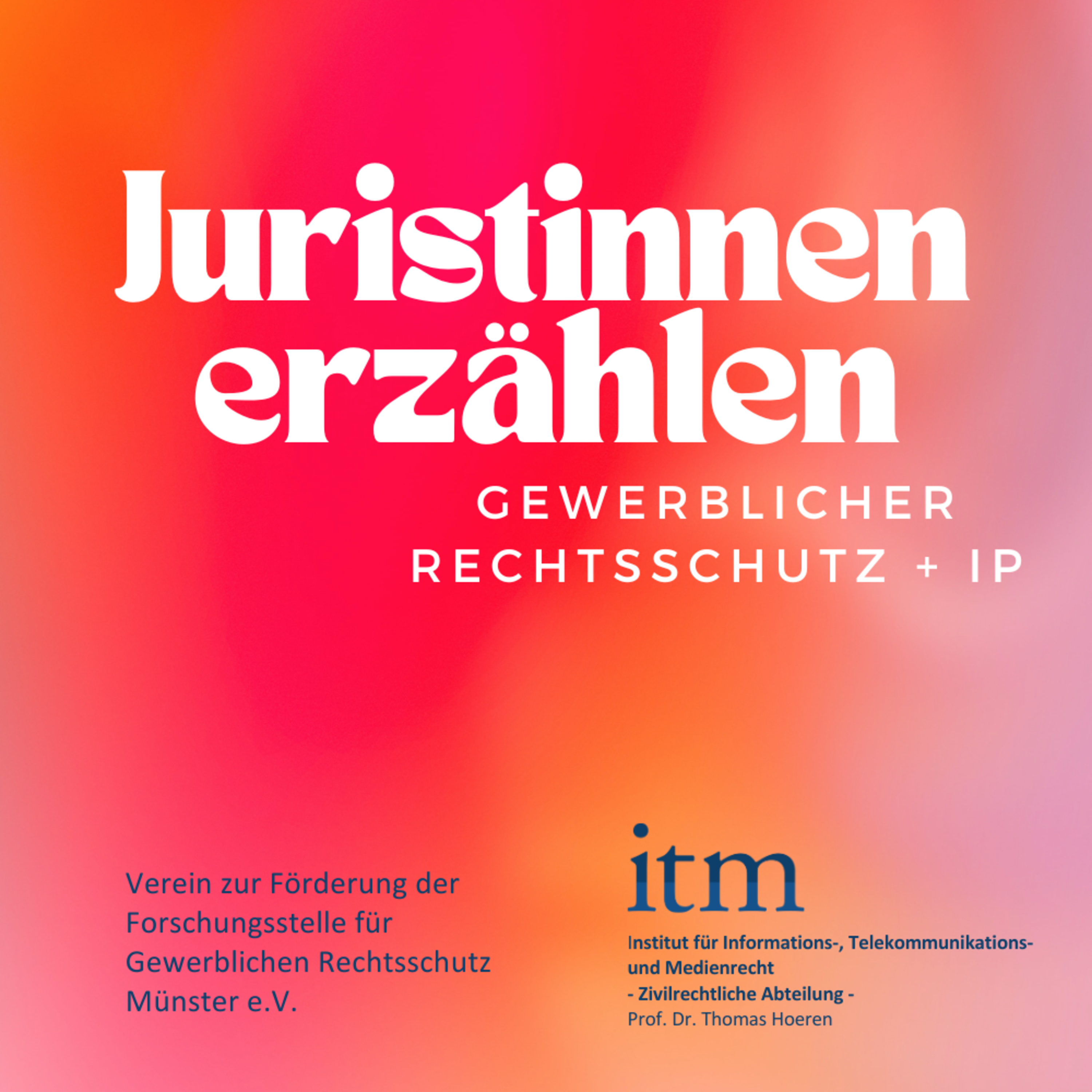
Juristinnen erzählen - ein Interviewpodcast des ITM MünsterFolge 15: Warum dürfen wir Mentoring nicht als "Nachhilfe" verstehen? Interview mit Dr. Andrea Lensing-KramerIn der 15. Folge von Juristinnen erzählen ist Dr. Andrea Lensing-Kramer zu Gast. Andrea war bis vor Kurzem noch als Anwältin und Partnerin bei Freshfields Bruckhaus Deringer im IP-Bereich tätig. Sie war eine der ersten Juristinnen, die in den 90er Jahren in einer der Vorgänger-Kanzleien von Freshfields zur Partnerin ernannt wurden. Heute widmet sich Andrea vor allem dem Thema Mentoring und Coaching. Als Mentorin stand sie bereits in den letzten Jahren jüngeren Kanzlei-Kolleginnen zur Seite. Im Interview spricht Andrea über ihre Zeit als junge Partnerin bei Freshfields, darüber, was sie damals gern gewusst...
2025-08-0152 min
A LA LATINA46 - María Lensing / Global CIO and CTO at SORENSON COMUNICATIONSNEW EPISODE: Maria Lensing – The Power of Being Seen
Global Chief Information and Technology Officer at Sorenson Communications
In this powerful episode of A LA LATINA, Claudia Romo Edelman and Cynthia Kleinbaum Milner sit down with Maria Lensing, one of the few Latinas to have reached the C-suite in Fortune 10 companies in the tech space.
From escaping Peru with her family to save her brother’s life, to becoming a transformational leader in corporate America, Maria opens up about her story of resilience, leadership, and identity.
3 Key Takeaways:
Agent vs. Hammer of Change: Maria warns Latinas about being used as driv...
2025-07-2327 minPodcast - Alejandro CremadesJon Lensing On Building A $1 Billion Telehealth Company That Provides A Full-Stack, White-Labeled Platform To Support Virtual Care ServicesJon Lensing’s journey is anything but conventional. It is packed with adrenaline and the kind of gut-check moments that define great founders. Inspired by his small-town roots and driven by a desire to change the status quo, he left behind a budding career in medicine to build OpenLoop.
The post Jon Lensing On Building A $1 Billion Telehealth Company That Provides A Full-Stack, White-Labeled Platform To Support Virtual Care Services appeared first on Alejandro Cremades.
2025-07-1632 min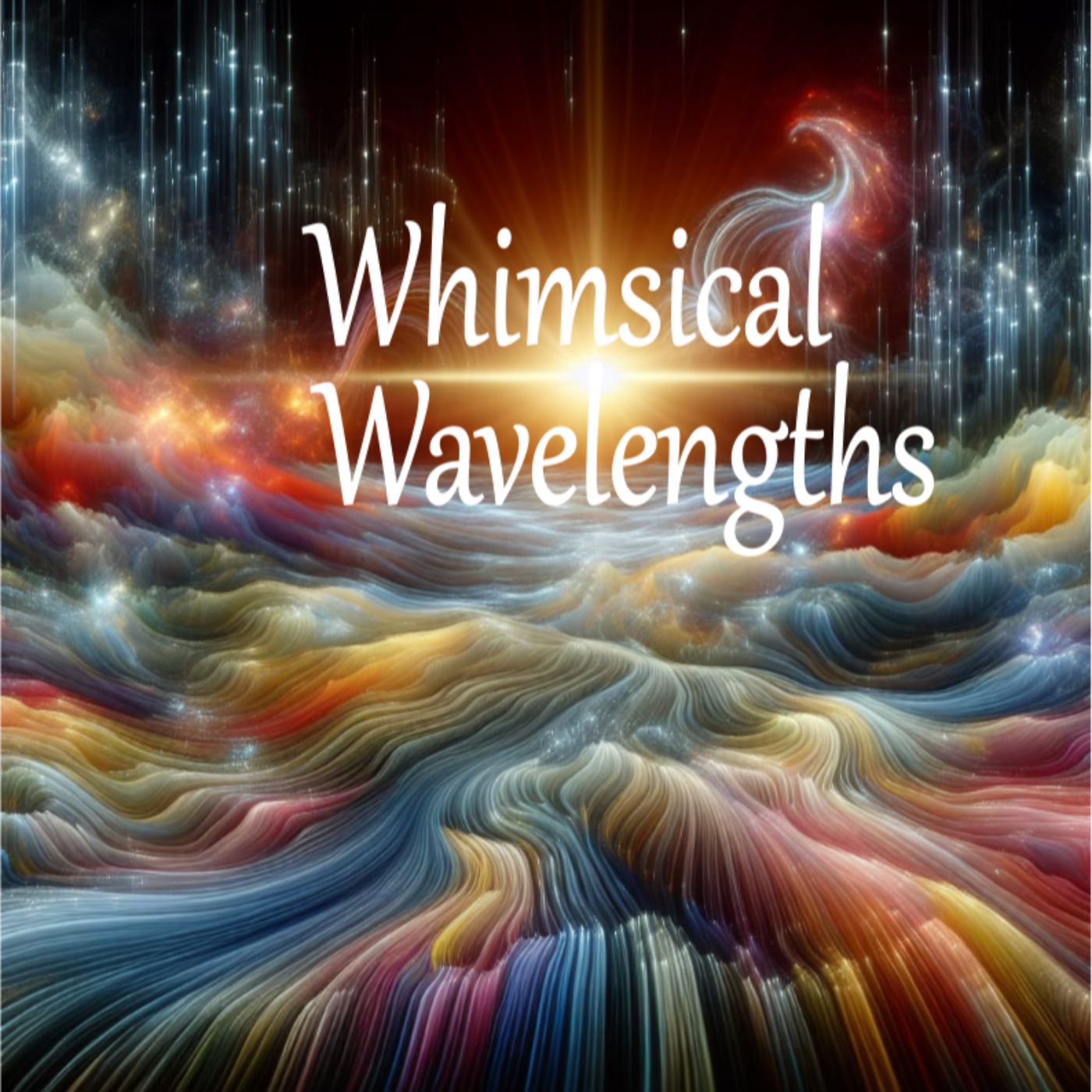
Whimsical Wavelengths - A Science PodcastGravitational Lensing Part 2! Strong Lensing, modeling and so much more!Welcome back to Part 2 of Gravitational lenses on Whimsical Wavelengths. In part 2 we finally get to the real star of the show, strong gravitational lensing and the paper that was underlying the topic.“Euclid: A complete Einstein ring in NGC 6505 “A lot less to setup this time. No need to stretch this out like gravity stretches time. But.....How did gravity stop the reckless driver?It pulled some strings… mainly the ones holding the car to the road.Before everything gets pulled downhill, time to jump in Please...
2025-04-281h 01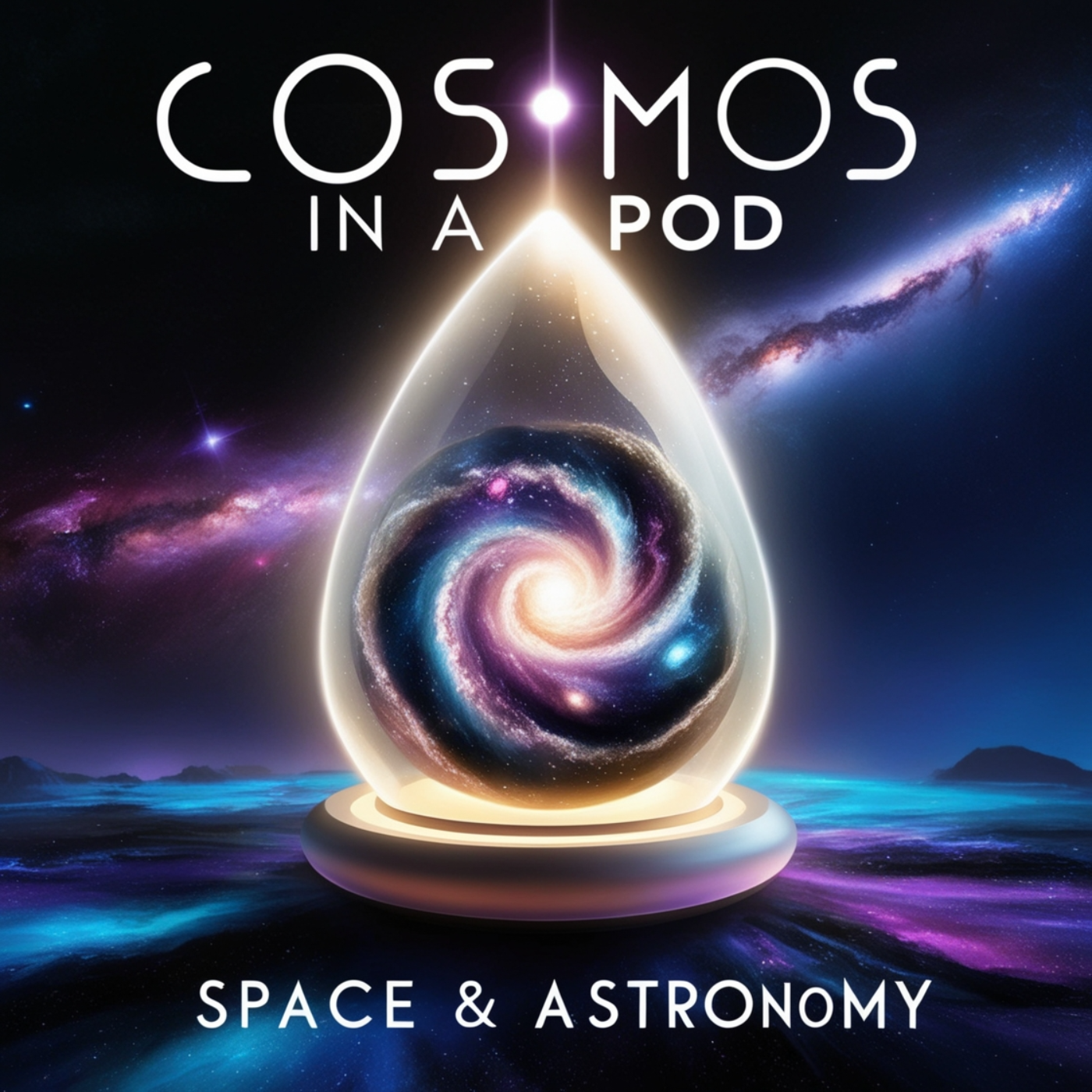
Cosmos in a PodCosmic Magnifying Glasses: The Power of Gravitational Lensing | Cosmos in a Pod S1E40In this episode of Cosmos in a Pod, we explore gravitational lensing—a breathtaking cosmic phenomenon where massive objects bend and magnify light, revealing hidden wonders of the universe.Key HighlightsWhat Is Gravitational Lensing?The bending of light by massive objects like galaxies, is predicted by Einstein’s general relativity.Acts as a natural magnifier, uncovering distant and faint cosmic objects.Types of Lensing:Strong Lensing: Creates Einstein rings and multiple images.Weak Lensing: Subtle distortions reveal dark matter.Microlensing: Detects small objects like rogue planets.Why It Matters:Maps dark matter and probes its myst...
2024-12-2018 min
Common Sense Digest & Colorado ClarityIowa’s Healthcare Landscape featuring Dr. Chelsea LensingIowa’s policymakers, providers, and insurers operate within a state comprised of an aging population and large rural areas. According to the Iowa Department of Justice, the state ranks 16th nationally for the number of residents 50-years-old and over. Approximately 18% of Iowa’s more-than-three-million residents are 65 years old and older while 23% are under 18 years old. The average life expectancy in Iowa is 78.12—21st highest in the country. In addition, the United States Department of Agriculture (USDA) considers 77 of the state’s 99 counties “rural” based on the amount of open countryside and rural towns. These are only some of the findings in...
2024-10-0735 min
Common Sense Digest & Colorado ClarityIowa’s Healthcare Landscape featuring Dr. Chelsea LensingIowa’s policymakers, providers, and insurers operate within a state comprised of an aging population and large rural areas. According to the Iowa Department of Justice, the state ranks 16th nationally for the number of residents 50-years-old and over. Approximately 18% of Iowa’s more-than-three-million residents are 65 years old and older while 23% are under 18 years old. The average life expectancy in Iowa is 78.12—21st highest in the country. In addition, the United States Department of Agriculture (USDA) considers 77 of the state’s 99 counties “rural” based on the amount of open countryside and rural towns. These are only some of the findings in...
2024-10-0735 min
1 Year 1 Fear with Cara Flynn86: A Different Sort of Business w/ Michael LensingMichael Lensing is the Co-Owner of Lensing Funeral & Cremation Service in Iowa City. Michael with speak of his childhood in Cedar Rapids, his mortician education, his marraige and children, and aging, among so many other things. Follow 1Y1F on Instagram: @1year1fearpodcast 1 Year 1 Fear is co-produced by sumadrepodcasts.com
2024-09-092h 26
CEO.com | Dispatches from the frontiers of leadershipOpenLoop Health CEO Jon LensingOn this episode of the CEO podcast Jon Lensing, CEO of OpenLoop, discusses the foundation and evolution of his company which provides comprehensive telehealth services. Established during the challenging times of the pandemic in 2020, OpenLoop initially served as a matching system for healthcare providers to cover shifts in hospitals. Lensing explains how the company pivoted to becoming a significant player in the telehealth sector, offering technological infrastructure, staffing, legal compliance, and billing services to facilitate remote healthcare. He shares insights into his background, from a small-town upbringing to starting a drone company during his undergraduate studies, which influenced his innovative...
2024-07-2327 min
Fintrepreneur#29: The Evolution of Fintech Marketing: Insights from Former CMO Brad LensingWelcome to another episode of Fintrepreneur! Today, we're diving into "The Evolution of Fintech Marketing: Insights from Former CMO Brad Lensing."In this episode, we'll explore Brad Lensing's career journey and key milestones in fintech marketing as a former CMO for both Prosper Marketplace & Sindeo. From his early days to pivotal moments in his career, we'll uncover the insights and experiences that have shaped his approach to marketing in the financial technology sector.Join us as we discuss Brad's strategies for fostering high-performing marketing teams, driving revenue growth, and scaling marketing operations efficiently. We'll delve...
2024-04-0838 min
Universe Today Podcast[Q&A] Supernova VS Nova, Orientation of the Moon, Gravitational Lensing of the CMBDoes gravitational lensing affect the CMB? Can the Great Attractor solve the Hubble tension? Why don't we put a Deep Space Network antenna in space? What's the difference between a nova and a supernova? Answering all these questions and more in this week's Q&A show.🦄 Support us on Patreon: https://patreon.com/universetoday📚 Suggest books in the book club:https://www.goodreads.com/group/show/1198440-universe-today-book-club00:00 Start01:31 [Andoria] How does gravitational lensing affect the CMB?05:31 [Vulcan] What's the difference between a nova and a supern...
2024-04-0200 min
The Hutch PodcastHealthcare of the Future, Navigating Fundraising and Operating as a CEO, and Keys to Success with Jon LensingJon Lensing is the Co-founder and CEO of Openloop. OpenLoop is a Des Moines-based startup powering the telehealth industry from end-to-end solutions that streamline virtual care. After graduating from medical school at the University of Iowa, Jon and his co-founders started OpenLoop. As the pandemic shocked the world OpenLoop found itself in a unique position to capitalize on the rapidly changing healthcare industry. Today, OpenLoop serves thousands of clients worldwide and continues to grow and expand operations to connect patients with medical professionals. In this episode with Jon Lensing, we discuss: 1. Personal Journey and Founding of...
2024-02-2149 min
Those Who Do PodcastThose Who Do: Psych Nurse Practitioner w/Cassy LensingCassy Lensing is a tattooed, dyed haired former wild child. She’s also a devoted mother and board certified Psych Nurse Practitioner. In this episode, Cassy talks about how getting pregnant at 19 completely changed the course of her life for the better. She shares her journey from life in small town Iowa working at her dad’s gas station to Nurse Practitioner focusing on treating the person instead of just the mental illness. Cassy explains why the people usually considered society’s lost are the most fulfilling folks to treat and how having her own successful practice has allowed her to mos...
2024-02-122h 03
Those Who Do PodcastThose Who Do: Psych Nurse Practitioner w/Cassy LensingCassy Lensing is a tattooed, dyed haired former wild child. She’s also a devoted mother and board certified Psych Nurse Practitioner. In this episode, Cassy talks about how getting pregnant at 19 completely changed the course of her life for the better. She shares her journey from life in small town Iowa working at her dad’s gas station to Nurse Practitioner focusing on treating the person instead of just the mental illness. Cassy explains why the people usually considered society’s lost are the most fulfilling folks to treat and how having her own successful practice has allowed her to mos...
2024-02-122h 03
Science SocietyDr. Alfred: Gravitational Lensing and Wavelike Dark MatterIn this intriguing episode, we are joined by Dr. Alfred, who takes us on a cosmic journey through the mysteries of gravitational lensing and the elusive nature of dark matter. Discussing his latest research, Dr. Alfred illuminates how the unique interplay between gravitational lensing and wavelike dark matter reveals hidden aspects of our universe. Together, we traverse the cosmos, understanding how these phenomena allow us to 'see' the unseen and open new paths for understanding the the true nature of dark matter. Join us for a deep dive into these cosmic phenomena, and which important role ultralight bosons (axions) play...
2023-06-082h 09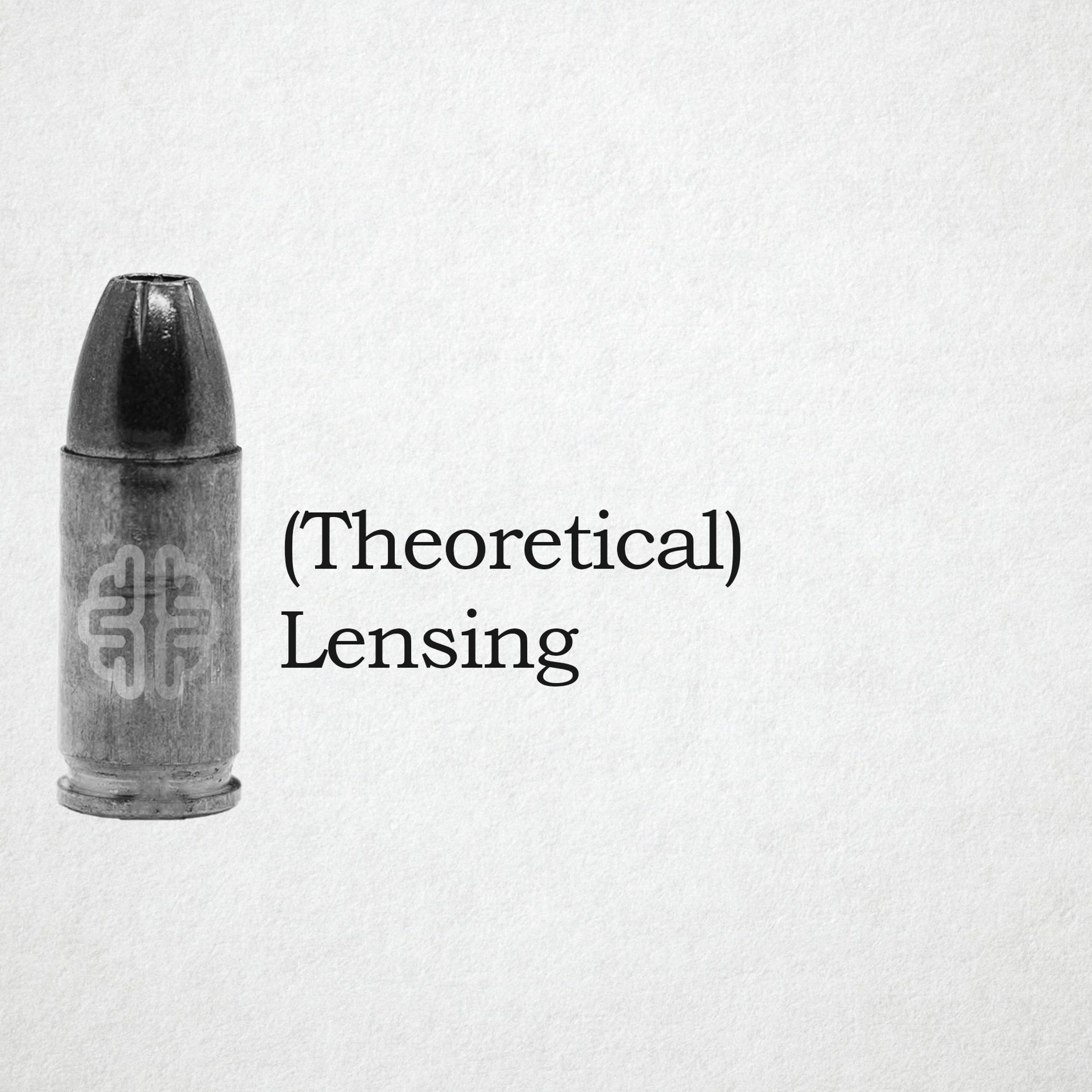
New Discourses(Theoretical) LensingNew Discourses Bullets, Ep. 33
Woke works through reframing, and much of the reframing occurs by passing every bit of relevant information through what they refer to as "theoretical lenses." These "lenses" might include Theories like Critical Race Theory or Queer Theory, agendas like Sustainability, or focuses like diversity, equity, and inclusion. This lensing effect distorts perception and comprehension and enables Woke manipulation, like seeing the world in a fun-house mirror. Understanding that all information that has been passed through Woke sources has been "lensed" is crucial to understanding it accurately and engaging it in a smart way. In this episode...
2023-01-2712 min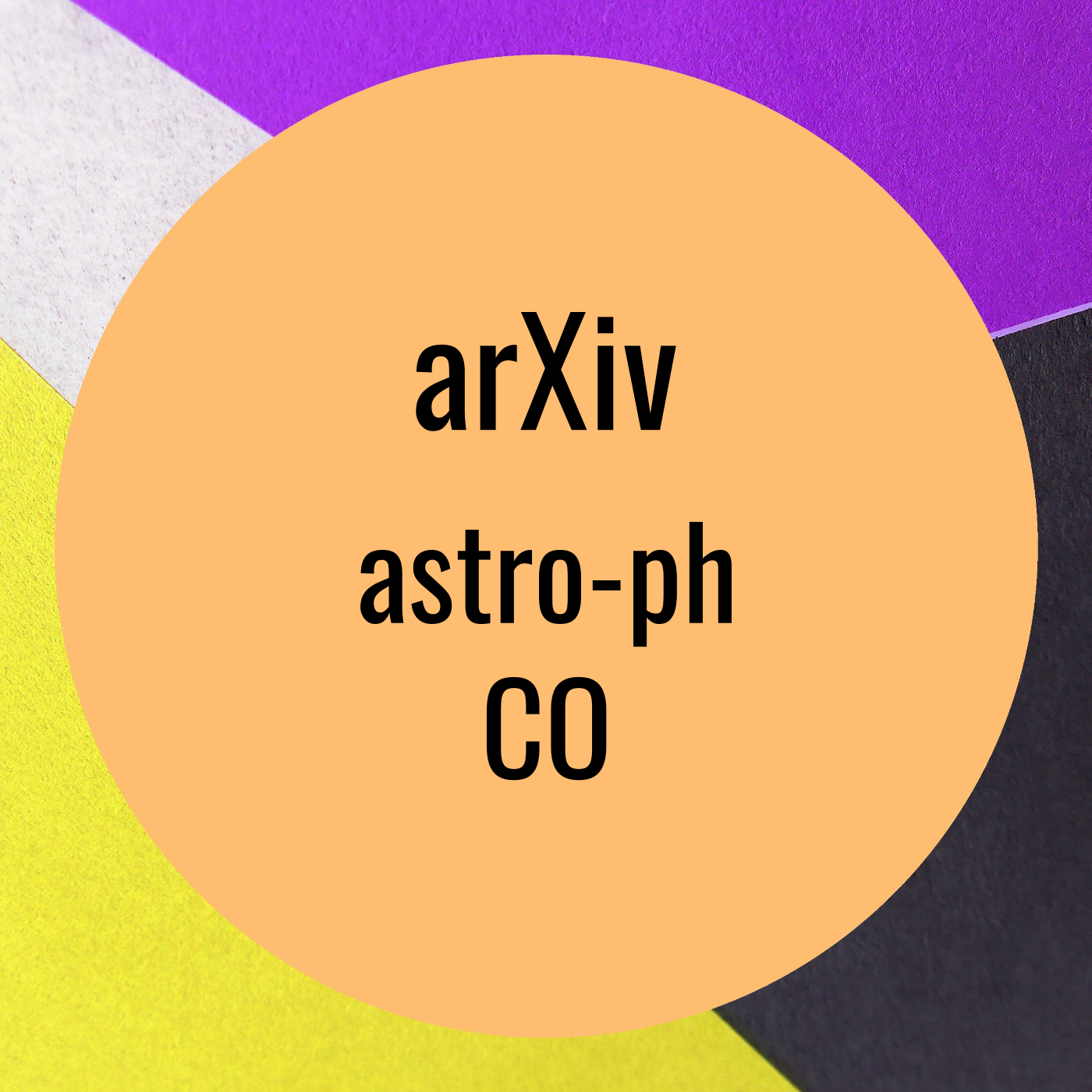
Astro arXiv | astro-ph.COReal-world CMB lensing quadratic estimator power spectrum responseReal-world CMB lensing quadratic estimator power spectrum response by Julien Carron. on Wednesday 30 November
I describe a method to estimate response matrices of Cosmic Microwave
Background (CMB) lensing power spectra estimators to the true sky power under
realistic conditions. Applicable to all lensing reconstruction pipelines based
on quadratic estimators (QE), it uses a small number of Gaussian CMB
Monte-Carlos and specially designed QE's in order to obtain sufficiently
accurate matrices with little computational effort. This method may be used to
improve the modelling of CMB lensing band-powers by incorporating at least some
of the non-idealities encountered in CMB lensing reconstruction...
2022-12-0100 min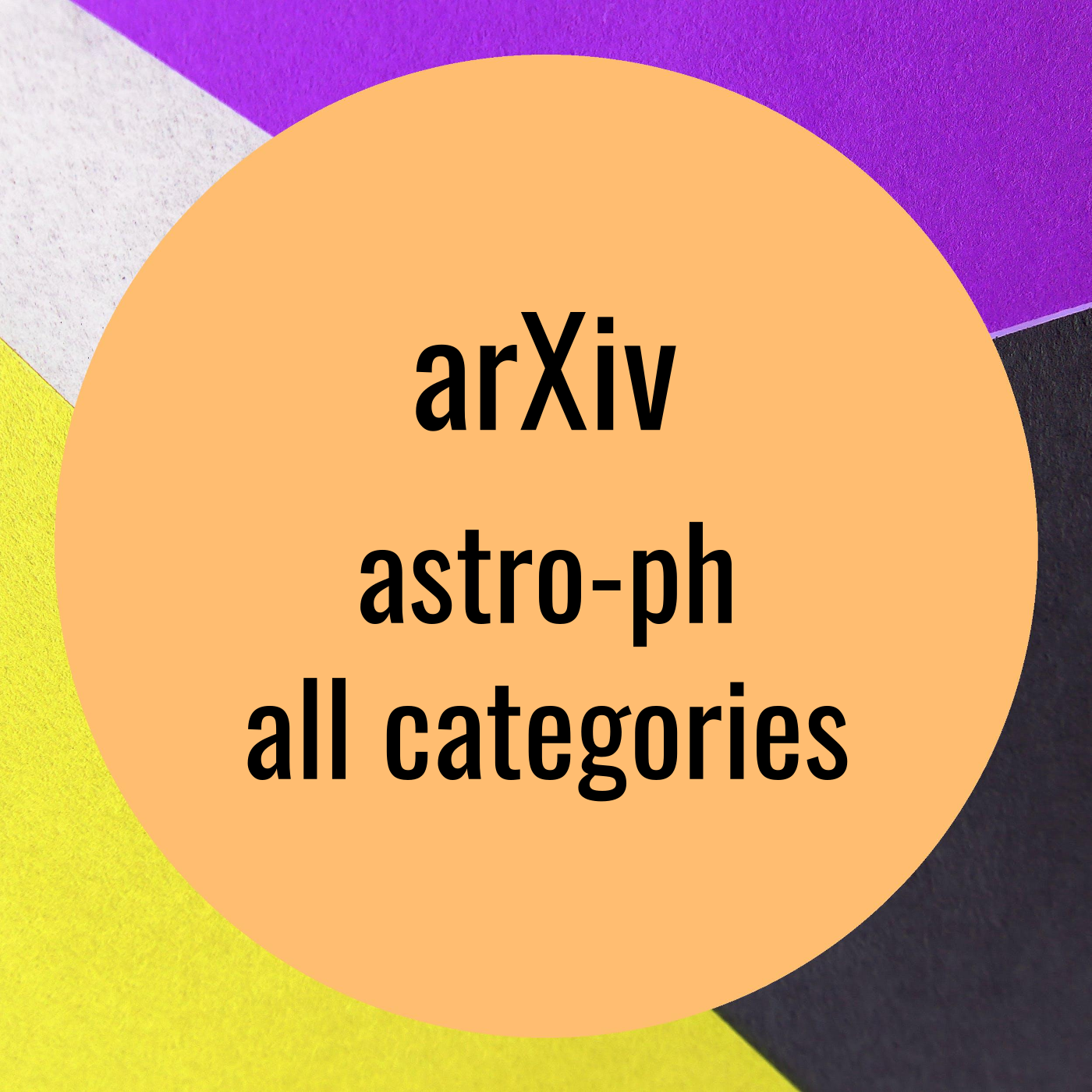
Astro arXiv | all categoriesReal-world CMB lensing quadratic estimator power spectrum responseReal-world CMB lensing quadratic estimator power spectrum response by Julien Carron. on Wednesday 30 November
I describe a method to estimate response matrices of Cosmic Microwave
Background (CMB) lensing power spectra estimators to the true sky power under
realistic conditions. Applicable to all lensing reconstruction pipelines based
on quadratic estimators (QE), it uses a small number of Gaussian CMB
Monte-Carlos and specially designed QE's in order to obtain sufficiently
accurate matrices with little computational effort. This method may be used to
improve the modelling of CMB lensing band-powers by incorporating at least some
of the non-idealities encountered in CMB lensing reconstruction...
2022-12-0100 min
Astro arXiv | all categoriesPERISTOLE: PackagE that geneRates tIme delay plotS caused by graviTatiOnaL lEnsingPERISTOLE: PackagE that geneRates tIme delay plotS caused by graviTatiOnaL lEnsing by T. S. Sachin Venkatesh et al. on Wednesday 30 November
We present PERISTOLE to study the various time delays associated with the
pulsar rotation and other general relativistic aspects of binary pulsars. It is
made available as an open-source python package which takes some parameters of
the double pulsar system as input and outputs the rotational and latitudinal
lensing delays along with the geometric and Shapiro delays that arise due to
gravitational lensing. This package was intended to provide a way to quickly
analyse, evaluate and study the differences...
2022-12-0100 min
Astro arXiv | all categoriesLine-of-sight effects in strong gravitational lensingLine-of-sight effects in strong gravitational lensing by Pierre Fleury et al. on Wednesday 30 November
While most strong-gravitational-lensing systems may be roughly modelled by a
single massive object between the source and the observer, in the details all
the structures near the light path contribute to the observed images. These
additional contributions, known as line-of-sight effects, are non-negligible in
practice. This article proposes a new theoretical framework to model the
line-of-sight effects, together with very promising applications at the
interface of weak and strong lensing. Our approach relies on the dominant-lens
approximation, where one deflector is treated as the main lens...
2022-12-0100 min
Astro arXiv | all categoriesWeak Lensing Tomographic Redshift Distribution Inference for the Hyper Suprime-Cam Subaru Strategic Program three-year shape catalogueWeak Lensing Tomographic Redshift Distribution Inference for the Hyper Suprime-Cam Subaru Strategic Program three-year shape catalogue by Markus Michael Rau et al. on Wednesday 30 November
We present posterior sample redshift distributions for the Hyper Suprime-Cam
Subaru Strategic Program Weak Lensing three-year (HSC Y3) analysis. Using the
galaxies' photometry and spatial cross-correlations, we conduct a combined
Bayesian Hierarchical Inference of the sample redshift distributions. The
spatial cross-correlations are derived using a subsample of Luminous Red
Galaxies (LRGs) with accurate redshift information available up to a
photometric redshift of $z < 1.2$. We derive the photometry-based constraints
using a combination of two empirical techniques...
2022-12-0100 min
Astro arXiv | all categoriesReal-world CMB lensing quadratic estimator power spectrum responseReal-world CMB lensing quadratic estimator power spectrum response by Julien Carron. on Wednesday 30 November
I describe a method to estimate response matrices of Cosmic Microwave
Background (CMB) lensing power spectra estimators to the true sky power under
realistic conditions. Applicable to all lensing reconstruction pipelines based
on quadratic estimators (QE), it uses a small number of Gaussian CMB
Monte-Carlos and specially designed QE's in order to obtain sufficiently
accurate matrices with little computational effort. This method may be used to
improve the modelling of CMB lensing band-powers by incorporating at least some
of the non-idealities encountered in CMB lensing reconstruction...
2022-12-0100 min
Astro arXiv | all categoriesWeak Lensing Tomographic Redshift Distribution Inference for the Hyper Suprime-Cam Subaru Strategic Program three-year shape catalogueWeak Lensing Tomographic Redshift Distribution Inference for the Hyper Suprime-Cam Subaru Strategic Program three-year shape catalogue by Markus Michael Rau et al. on Wednesday 30 November
We present posterior sample redshift distributions for the Hyper Suprime-Cam
Subaru Strategic Program Weak Lensing three-year (HSC Y3) analysis. Using the
galaxies' photometry and spatial cross-correlations, we conduct a combined
Bayesian Hierarchical Inference of the sample redshift distributions. The
spatial cross-correlations are derived using a subsample of Luminous Red
Galaxies (LRGs) with accurate redshift information available up to a
photometric redshift of $z < 1.2$. We derive the photometry-based constraints
using a combination of two empirical techniques...
2022-12-0100 min
Astro arXiv | all categoriesReal-world CMB lensing quadratic estimator power spectrum responseReal-world CMB lensing quadratic estimator power spectrum response by Julien Carron. on Wednesday 30 November
I describe a method to estimate response matrices of Cosmic Microwave
Background (CMB) lensing power spectra estimators to the true sky power under
realistic conditions. Applicable to all lensing reconstruction pipelines based
on quadratic estimators (QE), it uses a small number of Gaussian CMB
Monte-Carlos and specially designed QE's in order to obtain sufficiently
accurate matrices with little computational effort. This method may be used to
improve the modelling of CMB lensing band-powers by incorporating at least some
of the non-idealities encountered in CMB lensing reconstruction...
2022-12-0100 min
Astro arXiv | astro-ph.IMPERISTOLE: PackagE that geneRates tIme delay plotS caused by graviTatiOnaL lEnsingPERISTOLE: PackagE that geneRates tIme delay plotS caused by graviTatiOnaL lEnsing by T. S. Sachin Venkatesh et al. on Wednesday 30 November
We present PERISTOLE to study the various time delays associated with the
pulsar rotation and other general relativistic aspects of binary pulsars. It is
made available as an open-source python package which takes some parameters of
the double pulsar system as input and outputs the rotational and latitudinal
lensing delays along with the geometric and Shapiro delays that arise due to
gravitational lensing. This package was intended to provide a way to quickly
analyse, evaluate and study the differences...
2022-12-0100 min
Astro arXiv | astro-ph.COReal-world CMB lensing quadratic estimator power spectrum responseReal-world CMB lensing quadratic estimator power spectrum response by Julien Carron. on Wednesday 30 November
I describe a method to estimate response matrices of Cosmic Microwave
Background (CMB) lensing power spectra estimators to the true sky power under
realistic conditions. Applicable to all lensing reconstruction pipelines based
on quadratic estimators (QE), it uses a small number of Gaussian CMB
Monte-Carlos and specially designed QE's in order to obtain sufficiently
accurate matrices with little computational effort. This method may be used to
improve the modelling of CMB lensing band-powers by incorporating at least some
of the non-idealities encountered in CMB lensing reconstruction...
2022-12-0100 min
Astro arXiv | astro-ph.COWeak Lensing Tomographic Redshift Distribution Inference for the Hyper Suprime-Cam Subaru Strategic Program three-year shape catalogueWeak Lensing Tomographic Redshift Distribution Inference for the Hyper Suprime-Cam Subaru Strategic Program three-year shape catalogue by Markus Michael Rau et al. on Wednesday 30 November
We present posterior sample redshift distributions for the Hyper Suprime-Cam
Subaru Strategic Program Weak Lensing three-year (HSC Y3) analysis. Using the
galaxies' photometry and spatial cross-correlations, we conduct a combined
Bayesian Hierarchical Inference of the sample redshift distributions. The
spatial cross-correlations are derived using a subsample of Luminous Red
Galaxies (LRGs) with accurate redshift information available up to a
photometric redshift of $z < 1.2$. We derive the photometry-based constraints
using a combination of two empirical techniques...
2022-12-0100 min
Astro arXiv | astro-ph.COWeak Lensing Tomographic Redshift Distribution Inference for the Hyper Suprime-Cam Subaru Strategic Program three-year shape catalogueWeak Lensing Tomographic Redshift Distribution Inference for the Hyper Suprime-Cam Subaru Strategic Program three-year shape catalogue by Markus Michael Rau et al. on Wednesday 30 November
We present posterior sample redshift distributions for the Hyper Suprime-Cam
Subaru Strategic Program Weak Lensing three-year (HSC Y3) analysis. Using the
galaxies' photometry and spatial cross-correlations, we conduct a combined
Bayesian Hierarchical Inference of the sample redshift distributions. The
spatial cross-correlations are derived using a subsample of Luminous Red
Galaxies (LRGs) with accurate redshift information available up to a
photometric redshift of $z < 1.2$. We derive the photometry-based constraints
using a combination of two empirical techniques...
2022-12-0100 min
Astro arXiv | astro-ph.COLine-of-sight effects in strong gravitational lensingLine-of-sight effects in strong gravitational lensing by Pierre Fleury et al. on Wednesday 30 November
While most strong-gravitational-lensing systems may be roughly modelled by a
single massive object between the source and the observer, in the details all
the structures near the light path contribute to the observed images. These
additional contributions, known as line-of-sight effects, are non-negligible in
practice. This article proposes a new theoretical framework to model the
line-of-sight effects, together with very promising applications at the
interface of weak and strong lensing. Our approach relies on the dominant-lens
approximation, where one deflector is treated as the main lens...
2022-12-0100 min
Astro arXiv | astro-ph.COReal-world CMB lensing quadratic estimator power spectrum responseReal-world CMB lensing quadratic estimator power spectrum response by Julien Carron. on Wednesday 30 November
I describe a method to estimate response matrices of Cosmic Microwave
Background (CMB) lensing power spectra estimators to the true sky power under
realistic conditions. Applicable to all lensing reconstruction pipelines based
on quadratic estimators (QE), it uses a small number of Gaussian CMB
Monte-Carlos and specially designed QE's in order to obtain sufficiently
accurate matrices with little computational effort. This method may be used to
improve the modelling of CMB lensing band-powers by incorporating at least some
of the non-idealities encountered in CMB lensing reconstruction...
2022-12-0100 min
Astro arXiv | astro-ph.COConstraining dark matter decays with cosmic microwave background and weak lensing shear observationsConstraining dark matter decays with cosmic microwave background and weak lensing shear observations by Jozef Bucko et al. on Tuesday 29 November
From observations of both low and high redshifts, it is well known that the
bulk of dark matter (DM) has to be stable or, at least, very long-lived.
However, the possibility that a small fraction of DM is unstable or that all of
DM decays with a half-life time ($\tau$) significantly larger than the age of
the universe is not ruled out. One-body decaying dark matter (DDM) consists of
a minimal extension to the $\Lambda$CDM model. It causes...
2022-11-3001 min
Astro arXiv | astro-ph.IMPERISTOLE: PackagE that geneRates tIme delay plotS caused by graviTatiOnaL lEnsingPERISTOLE: PackagE that geneRates tIme delay plotS caused by graviTatiOnaL lEnsing by T. S. Sachin Venkatesh et al. on Tuesday 29 November
We present PERISTOLE to study the various time delays associated with the
pulsar rotation and other general relativistic aspects of binary pulsars. It is
made available as an open-source python package which takes some parameters of
the double pulsar system as input and outputs the rotational and latitudinal
lensing delays along with the geometric and Shapiro delays that arise due to
gravitational lensing. This package was intended to provide a way to quickly
analyse, evaluate and study the differences...
2022-11-3000 min
Astro arXiv | all categoriesConstraining dark matter decays with cosmic microwave background and weak lensing shear observationsConstraining dark matter decays with cosmic microwave background and weak lensing shear observations by Jozef Bucko et al. on Tuesday 29 November
From observations of both low and high redshifts, it is well known that the
bulk of dark matter (DM) has to be stable or, at least, very long-lived.
However, the possibility that a small fraction of DM is unstable or that all of
DM decays with a half-life time ($\tau$) significantly larger than the age of
the universe is not ruled out. One-body decaying dark matter (DDM) consists of
a minimal extension to the $\Lambda$CDM model. It causes...
2022-11-3001 min
Astro arXiv | all categoriesReducing the Impact of Weak-lensing Errors on Gravitational-wave Standard SirensReducing the Impact of Weak-lensing Errors on Gravitational-wave Standard Sirens by Zhao-Feng Wu et al. on Tuesday 29 November
The mergers of supermassive black hole binaries (SMBHBs) can serve as
standard sirens: the gravitational wave (GW) analog of standard candles. The
upcoming space-borne GW detectors will be able to discover such systems and
estimate their luminosity distances precisely. Unfortunately, weak
gravitational lensing can induce significant errors in the measured distance of
these standard sirens at high redshift, severely limiting their usefulness as
precise distance probes. The uncertainty due to weak lensing can be reduced if
the lensing magnification of the siren...
2022-11-3000 min
Astro arXiv | all categoriesPERISTOLE: PackagE that geneRates tIme delay plotS caused by graviTatiOnaL lEnsingPERISTOLE: PackagE that geneRates tIme delay plotS caused by graviTatiOnaL lEnsing by T. S. Sachin Venkatesh et al. on Tuesday 29 November
We present PERISTOLE to study the various time delays associated with the
pulsar rotation and other general relativistic aspects of binary pulsars. It is
made available as an open-source python package which takes some parameters of
the double pulsar system as input and outputs the rotational and latitudinal
lensing delays along with the geometric and Shapiro delays that arise due to
gravitational lensing. This package was intended to provide a way to quickly
analyse, evaluate and study the differences...
2022-11-3000 min
Astro arXiv | astro-ph.COReducing the Impact of Weak-lensing Errors on Gravitational-wave Standard SirensReducing the Impact of Weak-lensing Errors on Gravitational-wave Standard Sirens by Zhao-Feng Wu et al. on Tuesday 29 November
The mergers of supermassive black hole binaries (SMBHBs) can serve as
standard sirens: the gravitational wave (GW) analog of standard candles. The
upcoming space-borne GW detectors will be able to discover such systems and
estimate their luminosity distances precisely. Unfortunately, weak
gravitational lensing can induce significant errors in the measured distance of
these standard sirens at high redshift, severely limiting their usefulness as
precise distance probes. The uncertainty due to weak lensing can be reduced if
the lensing magnification of the siren...
2022-11-3000 min
Astro arXiv | all categoriesReducing the Impact of Weak-lensing Errors on Gravitational-wave Standard SirensReducing the Impact of Weak-lensing Errors on Gravitational-wave Standard Sirens by Zhao-Feng Wu et al. on Monday 28 November
The mergers of supermassive black hole binaries (SMBHBs) can serve as
standard sirens: the gravitational wave (GW) analog of standard candles. The
upcoming space-borne GW detectors will be able to discover such systems and
estimate their luminosity distances precisely. Unfortunately, weak
gravitational lensing can induce significant errors in the measured distance of
these standard sirens at high redshift, severely limiting their usefulness as
precise distance probes. The uncertainty due to weak lensing can be reduced if
the lensing magnification of the siren...
2022-11-2901 min
Astro arXiv | all categoriesConstraining dark matter decays with cosmic microwave background and weak lensing shear observationsConstraining dark matter decays with cosmic microwave background and weak lensing shear observations by Jozef Bucko et al. on Monday 28 November
From observations of both low and high redshifts, it is well known that the
bulk of dark matter (DM) has to be stable or, at least, very long-lived.
However, the possibility that a small fraction of DM is unstable or that all of
DM decays with a half-life time ($\tau$) significantly larger than the age of
the universe is not ruled out. One-body decaying dark matter (DDM) consists of
a minimal extension to the $\Lambda$CDM model. It causes...
2022-11-2900 min
Astro arXiv | all categoriesCross-correlation of DES Y3 lensing and ACT it Planck thermal Sunyaev Zel'dovich Effect II: Modeling and constraints on halo pressure profilesCross-correlation of DES Y3 lensing and ACT it Planck thermal Sunyaev Zel'dovich Effect II: Modeling and constraints on halo pressure profiles by S. Pandey et al. on Monday 28 November
Hot, ionized gas leaves an imprint on the cosmic microwave background via the
thermal Sunyaev Zel'dovich (tSZ) effect. The cross-correlation of gravitational
lensing (which traces the projected mass) with the tSZ effect (which traces the
projected gas pressure) is a powerful probe of the thermal state of ionized
baryons throughout the Universe, and is sensitive to effects such as baryonic
feedback. In a companion paper (Gatti et al. 2021), we present tomographic
...
2022-11-2901 min
Astro arXiv | astro-ph.COCross-correlation of DES Y3 lensing and ACT it Planck thermal Sunyaev Zel'dovich Effect II: Modeling and constraints on halo pressure profilesCross-correlation of DES Y3 lensing and ACT it Planck thermal Sunyaev Zel'dovich Effect II: Modeling and constraints on halo pressure profiles by S. Pandey et al. on Monday 28 November
Hot, ionized gas leaves an imprint on the cosmic microwave background via the
thermal Sunyaev Zel'dovich (tSZ) effect. The cross-correlation of gravitational
lensing (which traces the projected mass) with the tSZ effect (which traces the
projected gas pressure) is a powerful probe of the thermal state of ionized
baryons throughout the Universe, and is sensitive to effects such as baryonic
feedback. In a companion paper (Gatti et al. 2021), we present tomographic
...
2022-11-2901 min
Astro arXiv | astro-ph.COReducing the Impact of Weak-lensing Errors on Gravitational-wave Standard SirensReducing the Impact of Weak-lensing Errors on Gravitational-wave Standard Sirens by Zhao-Feng Wu et al. on Monday 28 November
The mergers of supermassive black hole binaries (SMBHBs) can serve as
standard sirens: the gravitational wave (GW) analog of standard candles. The
upcoming space-borne GW detectors will be able to discover such systems and
estimate their luminosity distances precisely. Unfortunately, weak
gravitational lensing can induce significant errors in the measured distance of
these standard sirens at high redshift, severely limiting their usefulness as
precise distance probes. The uncertainty due to weak lensing can be reduced if
the lensing magnification of the siren...
2022-11-2901 min
Astro arXiv | astro-ph.COConstraining dark matter decays with cosmic microwave background and weak lensing shear observationsConstraining dark matter decays with cosmic microwave background and weak lensing shear observations by Jozef Bucko et al. on Monday 28 November
From observations of both low and high redshifts, it is well known that the
bulk of dark matter (DM) has to be stable or, at least, very long-lived.
However, the possibility that a small fraction of DM is unstable or that all of
DM decays with a half-life time ($\tau$) significantly larger than the age of
the universe is not ruled out. One-body decaying dark matter (DDM) consists of
a minimal extension to the $\Lambda$CDM model. It causes...
2022-11-2900 min
Astro arXiv | astro-ph.COCross-correlation of DES Y3 lensing and ACT it Planck thermal Sunyaev Zel'dovich Effect II: Modeling and constraints on halo pressure profilesCross-correlation of DES Y3 lensing and ACT it Planck thermal Sunyaev Zel'dovich Effect II: Modeling and constraints on halo pressure profiles by S. Pandey et al. on Sunday 27 November
Hot, ionized gas leaves an imprint on the cosmic microwave background via the
thermal Sunyaev Zel'dovich (tSZ) effect. The cross-correlation of gravitational
lensing (which traces the projected mass) with the tSZ effect (which traces the
projected gas pressure) is a powerful probe of the thermal state of ionized
baryons throughout the Universe, and is sensitive to effects such as baryonic
feedback. In a companion paper (Gatti et al. 2021), we present tomographic
...
2022-11-2800 min
Astro arXiv | all categoriesCross-correlation of DES Y3 lensing and ACT it Planck thermal Sunyaev Zel'dovich Effect II: Modeling and constraints on halo pressure profilesCross-correlation of DES Y3 lensing and ACT it Planck thermal Sunyaev Zel'dovich Effect II: Modeling and constraints on halo pressure profiles by S. Pandey et al. on Sunday 27 November
Hot, ionized gas leaves an imprint on the cosmic microwave background via the
thermal Sunyaev Zel'dovich (tSZ) effect. The cross-correlation of gravitational
lensing (which traces the projected mass) with the tSZ effect (which traces the
projected gas pressure) is a powerful probe of the thermal state of ionized
baryons throughout the Universe, and is sensitive to effects such as baryonic
feedback. In a companion paper (Gatti et al. 2021), we present tomographic
...
2022-11-2800 min
Astro arXiv | all categoriesPlasma lensing near the eclipses of the Black Widow pulsar B1957+20Plasma lensing near the eclipses of the Black Widow pulsar B1957+20 by Fang Xi Lin et al. on Thursday 24 November
Recently, several eclipsing millisecond pulsars have been shown to experience
strong and apparent weak lensing from the outflow of their ionized companions.
Lensing can be a powerful probe of the ionized plasma, with the strongest
lenses potentially resolving emission regions of pulsars. Understanding lensing
in the `laboratory-like' conditions of an eclipsing pulsar may be analogously
applied to fast radio bursts, many of which reside in dense, magnetized
environments. We examined variable dispersion measure (DM), absorption,
scattering, and flux density in...
2022-11-2501 min
Astro arXiv | all categoriesEtherington duality breaking: gravitational lensing in non-metric spacetimes versus intrinsic alignmentsEtherington duality breaking: gravitational lensing in non-metric spacetimes versus intrinsic alignments by Eileen Sophie Giesel et al. on Wednesday 23 November
The Etherington distance duality relation is well-established for metric
theories of gravity, and confirms the duality between the luminosity distance
and the angular diameter distance through the conservation of surface
brightness. A violation of the Etherington distance duality due to lensing in a
non-metric spacetime would lead to fluctuations in surface brightness of
galaxies. Likewise, fluctuations of the surface brightness can arise in
classical astrophysics as a consequence of intrinsic tidal interaction of
galaxies with their environment. Therefore, we study...
2022-11-2400 min
Astro arXiv | astro-ph.COEtherington duality breaking: gravitational lensing in non-metric spacetimes versus intrinsic alignmentsEtherington duality breaking: gravitational lensing in non-metric spacetimes versus intrinsic alignments by Eileen Sophie Giesel et al. on Wednesday 23 November
The Etherington distance duality relation is well-established for metric
theories of gravity, and confirms the duality between the luminosity distance
and the angular diameter distance through the conservation of surface
brightness. A violation of the Etherington distance duality due to lensing in a
non-metric spacetime would lead to fluctuations in surface brightness of
galaxies. Likewise, fluctuations of the surface brightness can arise in
classical astrophysics as a consequence of intrinsic tidal interaction of
galaxies with their environment. Therefore, we study...
2022-11-2400 min
Astro arXiv | astro-ph.COConsistent and simultaneous modelling of galaxy clustering and galaxy-galaxy lensing with Subhalo Abundance MatchingConsistent and simultaneous modelling of galaxy clustering and galaxy-galaxy lensing with Subhalo Abundance Matching by Sergio Contreras et al. on Wednesday 23 November
The spatial distribution of galaxies and their gravitational lensing signal
offer complementary tests of galaxy formation physics and cosmology. However,
their synergy can only be fully exploited if both probes are modelled
accurately and consistently. In this paper, we demonstrate that this can be
achieved using an extension of Subhalo Abundance Matching, dubbed SHAMe.
Specifically, we use mock catalogues built from the TNG300 hydrodynamical
simulation to show that SHAMe can simultaneously model the multipoles of the
redshift-space galaxy...
2022-11-2401 min
Astro arXiv | all categoriesPlasma lensing near the eclipses of the Black Widow pulsar B1957+20Plasma lensing near the eclipses of the Black Widow pulsar B1957+20 by Fang Xi Lin et al. on Wednesday 23 November
Recently, several eclipsing millisecond pulsars have been shown to experience
strong and apparent weak lensing from the outflow of their ionized companions.
Lensing can be a powerful probe of the ionized plasma, with the strongest
lenses potentially resolving emission regions of pulsars. Understanding lensing
in the `laboratory-like' conditions of an eclipsing pulsar may be analogously
applied to fast radio bursts, many of which reside in dense, magnetized
environments. We examined variable dispersion measure (DM), absorption,
scattering, and flux density in...
2022-11-2400 min
Astro arXiv | all categoriesConsistent and simultaneous modelling of galaxy clustering and galaxy-galaxy lensing with Subhalo Abundance MatchingConsistent and simultaneous modelling of galaxy clustering and galaxy-galaxy lensing with Subhalo Abundance Matching by Sergio Contreras et al. on Wednesday 23 November
The spatial distribution of galaxies and their gravitational lensing signal
offer complementary tests of galaxy formation physics and cosmology. However,
their synergy can only be fully exploited if both probes are modelled
accurately and consistently. In this paper, we demonstrate that this can be
achieved using an extension of Subhalo Abundance Matching, dubbed SHAMe.
Specifically, we use mock catalogues built from the TNG300 hydrodynamical
simulation to show that SHAMe can simultaneously model the multipoles of the
redshift-space galaxy...
2022-11-2401 min
Astro arXiv | astro-ph.COEtherington duality breaking: gravitational lensing in non-metric spacetimes versus intrinsic alignmentsEtherington duality breaking: gravitational lensing in non-metric spacetimes versus intrinsic alignments by Eileen Sophie Giesel et al. on Tuesday 22 November
The Etherington distance duality relation is well-established for metric
theories of gravity, and confirms the duality between the luminosity distance
and the angular diameter distance through the conservation of surface
brightness. A violation of the Etherington distance duality due to lensing in a
non-metric spacetime would lead to fluctuations in surface brightness of
galaxies. Likewise, fluctuations of the surface brightness can arise in
classical astrophysics as a consequence of intrinsic tidal interaction of
galaxies with their environment. Therefore, we study...
2022-11-2300 min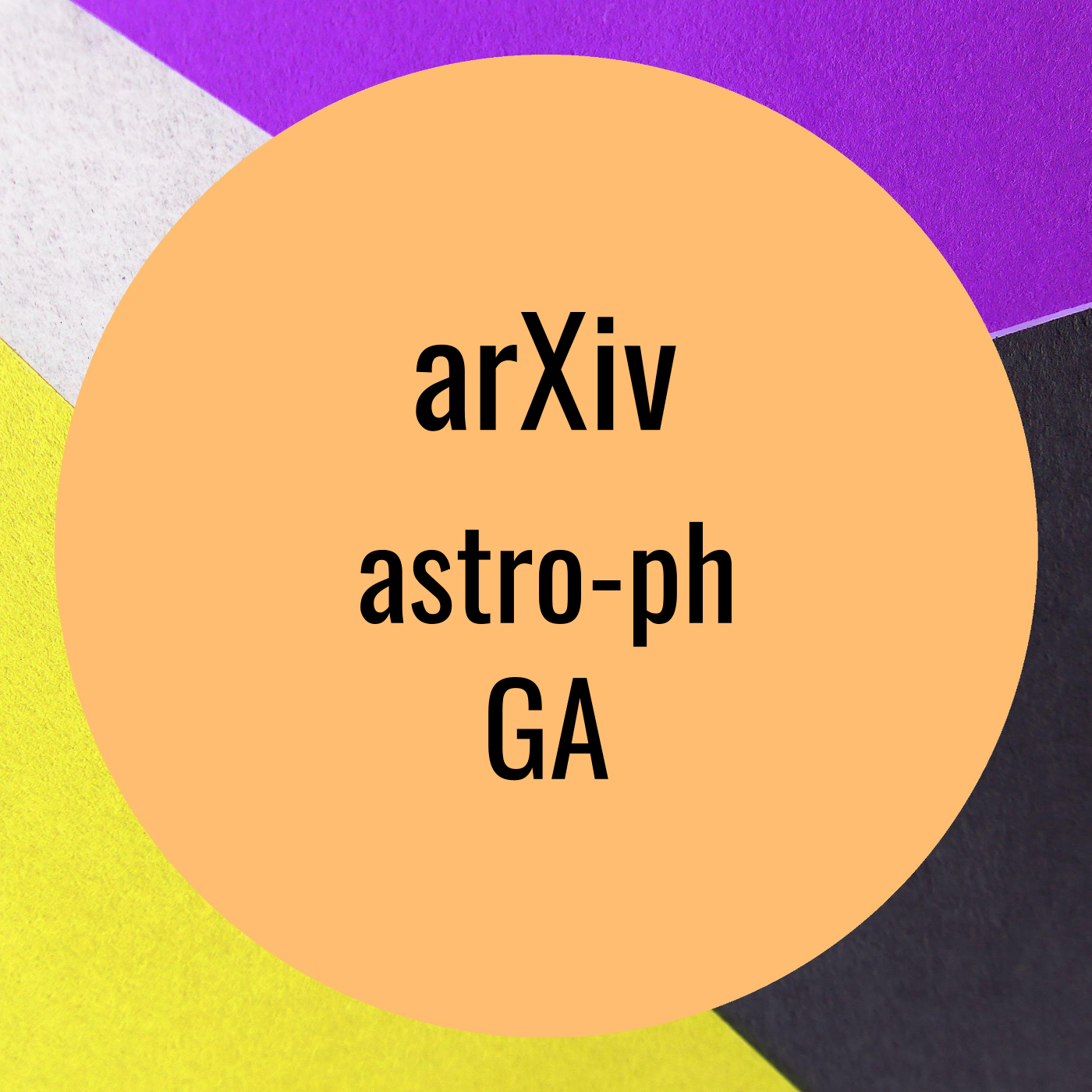
Astro arXiv | astro-ph.GAA ~200 pc-sized core of Milky Way dark matter halo constrained from the OGLE micro-lensing sky mapA ~200 pc-sized core of Milky Way dark matter halo constrained from the OGLE micro-lensing sky map by Shu-Rui Lin et al. on Tuesday 22 November
We report the detection of a 219 $^{+10}_{-28}$ pc-sized dark matter core
structure in the center of Milky Way at $68\%$ confidence level by using the
micro-lensing event rate sky map data from the Optical Gravitational Lensing
Experiment (OGLE) survey. For the first time, we apply the spacial information
of the micro-lensing sky map and model it with the detailed Milky Way
structure, the Mini Dark Matter Structure (MDMS) fraction ($f_{\rm
MDMS}=\Omega_{\rm MDMS}/\Omega_{\rm...
2022-11-2300 min
Astro arXiv | astro-ph.COConsistent and simultaneous modelling of galaxy clustering and galaxy-galaxy lensing with Subhalo Abundance MatchingConsistent and simultaneous modelling of galaxy clustering and galaxy-galaxy lensing with Subhalo Abundance Matching by Sergio Contreras et al. on Tuesday 22 November
The spatial distribution of galaxies and their gravitational lensing signal
offer complementary tests of galaxy formation physics and cosmology. However,
their synergy can only be fully exploited if both probes are modelled
accurately and consistently. In this paper, we demonstrate that this can be
achieved using an extension of Subhalo Abundance Matching, dubbed SHAMe.
Specifically, we use mock catalogues built from the TNG300 hydrodynamical
simulation to show that SHAMe can simultaneously model the multipoles of the
redshift-space galaxy...
2022-11-2301 min
Astro arXiv | astro-ph.COConsistent and simultaneous modelling of galaxy clustering and galaxy-galaxy lensing with Subhalo Abundance MatchingConsistent and simultaneous modelling of galaxy clustering and galaxy-galaxy lensing with Subhalo Abundance Matching by Sergio Contreras et al. on Tuesday 22 November
The spatial distribution of galaxies and their gravitational lensing signal
offer complementary tests of galaxy formation physics and cosmology. However,
their synergy can only be fully exploited if both probes are modelled
accurately and consistently. In this paper, we demonstrate that this can be
achieved using an extension of Subhalo Abundance Matching, dubbed SHAMe.
Specifically, we use mock catalogues built from the TNG300 hydrodynamical
simulation to show that SHAMe can simultaneously model the multipoles of the
redshift-space galaxy...
2022-11-2301 min
Astro arXiv | astro-ph.COStarlet higher order statistics for galaxy clustering and weak lensingStarlet higher order statistics for galaxy clustering and weak lensing by Virginia Ajani et al. on Tuesday 22 November
We present a first application to photometric galaxy clustering and weak
lensing of wavelet based multi-scale higher order summary statistics: starlet
peak counts and starlet $\ell_1$-norm. Peak counts are the local maxima in the
map and the $\ell_1$-norm is computed via the sum of the absolute values of the
starlet (wavelet) decomposition coefficients of a map, providing a fast
multi-scale calculation of the pixel distribution, encoding the information of
all pixels in the map. We employ the cosmo-SLICS simulations sources...
2022-11-2300 min
Astro arXiv | astro-ph.COThe galaxy formation origin of the lensing is low problemThe galaxy formation origin of the lensing is low problem by Jonas Chaves-Montero et al. on Tuesday 22 November
Recent analyses show that $\Lambda$CDM-based models optimised to reproduce
the clustering of massive galaxies overestimate their gravitational lensing by
about 30\%, the so-called lensing is low problem. Using a state-of-the-art
hydrodynamical simulation, we show that this discrepancy reflects shortcomings
in standard galaxy-halo connection models rather than tensions within the
$\Lambda$CDM paradigm itself. Specifically, this problem results from ignoring
a variety of galaxy formation effects, including assembly bias, segregation of
satellite galaxies relative to dark matter, and baryonic effects on the matter
...
2022-11-2300 min
Astro arXiv | all categoriesA ~200 pc-sized core of Milky Way dark matter halo constrained from the OGLE micro-lensing sky mapA ~200 pc-sized core of Milky Way dark matter halo constrained from the OGLE micro-lensing sky map by Shu-Rui Lin et al. on Tuesday 22 November
We report the detection of a 219 $^{+10}_{-28}$ pc-sized dark matter core
structure in the center of Milky Way at $68\%$ confidence level by using the
micro-lensing event rate sky map data from the Optical Gravitational Lensing
Experiment (OGLE) survey. For the first time, we apply the spacial information
of the micro-lensing sky map and model it with the detailed Milky Way
structure, the Mini Dark Matter Structure (MDMS) fraction ($f_{\rm
MDMS}=\Omega_{\rm MDMS}/\Omega_{\rm...
2022-11-2300 min
Astro arXiv | all categoriesConsistent and simultaneous modelling of galaxy clustering and galaxy-galaxy lensing with Subhalo Abundance MatchingConsistent and simultaneous modelling of galaxy clustering and galaxy-galaxy lensing with Subhalo Abundance Matching by Sergio Contreras et al. on Tuesday 22 November
The spatial distribution of galaxies and their gravitational lensing signal
offer complementary tests of galaxy formation physics and cosmology. However,
their synergy can only be fully exploited if both probes are modelled
accurately and consistently. In this paper, we demonstrate that this can be
achieved using an extension of Subhalo Abundance Matching, dubbed SHAMe.
Specifically, we use mock catalogues built from the TNG300 hydrodynamical
simulation to show that SHAMe can simultaneously model the multipoles of the
redshift-space galaxy...
2022-11-2301 min
Astro arXiv | all categoriesConsistent and simultaneous modelling of galaxy clustering and galaxy-galaxy lensing with Subhalo Abundance MatchingConsistent and simultaneous modelling of galaxy clustering and galaxy-galaxy lensing with Subhalo Abundance Matching by Sergio Contreras et al. on Tuesday 22 November
The spatial distribution of galaxies and their gravitational lensing signal
offer complementary tests of galaxy formation physics and cosmology. However,
their synergy can only be fully exploited if both probes are modelled
accurately and consistently. In this paper, we demonstrate that this can be
achieved using an extension of Subhalo Abundance Matching, dubbed SHAMe.
Specifically, we use mock catalogues built from the TNG300 hydrodynamical
simulation to show that SHAMe can simultaneously model the multipoles of the
redshift-space galaxy...
2022-11-2301 min
Astro arXiv | all categoriesStarlet higher order statistics for galaxy clustering and weak lensingStarlet higher order statistics for galaxy clustering and weak lensing by Virginia Ajani et al. on Tuesday 22 November
We present a first application to photometric galaxy clustering and weak
lensing of wavelet based multi-scale higher order summary statistics: starlet
peak counts and starlet $\ell_1$-norm. Peak counts are the local maxima in the
map and the $\ell_1$-norm is computed via the sum of the absolute values of the
starlet (wavelet) decomposition coefficients of a map, providing a fast
multi-scale calculation of the pixel distribution, encoding the information of
all pixels in the map. We employ the cosmo-SLICS simulations sources...
2022-11-2300 min
Astro arXiv | all categoriesEtherington duality breaking: gravitational lensing in non-metric spacetimes versus intrinsic alignmentsEtherington duality breaking: gravitational lensing in non-metric spacetimes versus intrinsic alignments by Eileen Sophie Giesel et al. on Tuesday 22 November
The Etherington distance duality relation is well-established for metric
theories of gravity, and confirms the duality between the luminosity distance
and the angular diameter distance through the conservation of surface
brightness. A violation of the Etherington distance duality due to lensing in a
non-metric spacetime would lead to fluctuations in surface brightness of
galaxies. Likewise, fluctuations of the surface brightness can arise in
classical astrophysics as a consequence of intrinsic tidal interaction of
galaxies with their environment. Therefore, we study...
2022-11-2300 min
Astro arXiv | all categoriesThe galaxy formation origin of the lensing is low problemThe galaxy formation origin of the lensing is low problem by Jonas Chaves-Montero et al. on Tuesday 22 November
Recent analyses show that $\Lambda$CDM-based models optimised to reproduce
the clustering of massive galaxies overestimate their gravitational lensing by
about 30\%, the so-called lensing is low problem. Using a state-of-the-art
hydrodynamical simulation, we show that this discrepancy reflects shortcomings
in standard galaxy-halo connection models rather than tensions within the
$\Lambda$CDM paradigm itself. Specifically, this problem results from ignoring
a variety of galaxy formation effects, including assembly bias, segregation of
satellite galaxies relative to dark matter, and baryonic effects on the matter
...
2022-11-2300 min
Astro arXiv | all categoriesStarlet higher order statistics for galaxy clustering and weak lensingStarlet higher order statistics for galaxy clustering and weak lensing by Virginia Ajani et al. on Monday 21 November
We present a first application to photometric galaxy clustering and weak
lensing of wavelet based multi-scale higher order summary statistics: starlet
peak counts and starlet $\ell_1$-norm. Peak counts are the local maxima in the
map and the $\ell_1$-norm is computed via the sum of the absolute values of the
starlet (wavelet) decomposition coefficients of a map, providing a fast
multi-scale calculation of the pixel distribution, encoding the information of
all pixels in the map. We employ the cosmo-SLICS simulations sources...
2022-11-2200 min
Astro arXiv | astro-ph.GAA ~200 pc-sized core of Milky Way dark matter halo constrained from the OGLE micro-lensing sky mapA ~200 pc-sized core of Milky Way dark matter halo constrained from the OGLE micro-lensing sky map by Shu-Rui Lin et al. on Monday 21 November
We report the detection of a 219 $^{+10}_{-28}$ pc-sized dark matter core
structure in the center of Milky Way at $68\%$ confidence level by using the
micro-lensing event rate sky map data from the Optical Gravitational Lensing
Experiment (OGLE) survey. For the first time, we apply the spacial information
of the micro-lensing sky map and model it with the detailed Milky Way
structure, the Mini Dark Matter Structure (MDMS) fraction ($f_{\rm
MDMS}=\Omega_{\rm MDMS}/\Omega_{\rm...
2022-11-2200 min
Astro arXiv | astro-ph.COStarlet higher order statistics for galaxy clustering and weak lensingStarlet higher order statistics for galaxy clustering and weak lensing by Virginia Ajani et al. on Monday 21 November
We present a first application to photometric galaxy clustering and weak
lensing of wavelet based multi-scale higher order summary statistics: starlet
peak counts and starlet $\ell_1$-norm. Peak counts are the local maxima in the
map and the $\ell_1$-norm is computed via the sum of the absolute values of the
starlet (wavelet) decomposition coefficients of a map, providing a fast
multi-scale calculation of the pixel distribution, encoding the information of
all pixels in the map. We employ the cosmo-SLICS simulations sources...
2022-11-2200 min
Astro arXiv | astro-ph.CODetecting deviations from Gaussianity in high-redshift CMB lensing mapsDetecting deviations from Gaussianity in high-redshift CMB lensing maps by Zhuoqi Zhang et al. on Monday 21 November
While the probability density function (PDF) of the cosmic microwave
background (CMB) convergence field approximately follows a Gaussian
distribution, small contributions from structures at low redshifts make the
overall distribution slightly non-Gaussian. Some of this late-time component
can be modelled using the distribution of galaxies and subtracted off from the
original CMB lensing map to produce a map of matter distribution at high
redshifts. Using this high-redshift mass map, we are able to directly study the
early phases of structure formation and look...
2022-11-2200 min
Astro arXiv | all categoriesVoid Lensing in Cubic Galileon GravityVoid Lensing in Cubic Galileon Gravity by Chen Su et al. on Monday 21 November
Weak lensing studies via cosmic voids are a promising probe of Modified
Gravity (MG). The Excess Surface mass Density (ESD) is widely used as a lensing
statistics in weak lensing researches. In this paper we use the ray-tracing
method to study the ESD around voids in simulations based on the Cubic Galileon
(CG) gravity. With the compilation of N-body simulation and ray-tracing method,
changes on the structure formation and deflection angle resulting from MG can
both be considered, making the extraction of lensing signals more realistic...
2022-11-2200 min
Astro arXiv | all categoriesDetecting deviations from Gaussianity in high-redshift CMB lensing mapsDetecting deviations from Gaussianity in high-redshift CMB lensing maps by Zhuoqi Zhang et al. on Monday 21 November
While the probability density function (PDF) of the cosmic microwave
background (CMB) convergence field approximately follows a Gaussian
distribution, small contributions from structures at low redshifts make the
overall distribution slightly non-Gaussian. Some of this late-time component
can be modelled using the distribution of galaxies and subtracted off from the
original CMB lensing map to produce a map of matter distribution at high
redshifts. Using this high-redshift mass map, we are able to directly study the
early phases of structure formation and look...
2022-11-2200 min
Astro arXiv | all categoriesThe galaxy formation origin of the lensing is low problemThe galaxy formation origin of the lensing is low problem by Jonas Chaves-Montero et al. on Monday 21 November
Recent analyses show that $\Lambda$CDM-based models optimised to reproduce
the clustering of massive galaxies overestimate their gravitational lensing by
about 30\%, the so-called lensing is low problem. Using a state-of-the-art
hydrodynamical simulation, we show that this discrepancy reflects shortcomings
in standard galaxy-halo connection models rather than tensions within the
$\Lambda$CDM paradigm itself. Specifically, this problem results from ignoring
a variety of galaxy formation effects, including assembly bias, segregation of
satellite galaxies relative to dark matter, and baryonic effects on the matter
...
2022-11-2200 min
Astro arXiv | astro-ph.COThe galaxy formation origin of the lensing is low problemThe galaxy formation origin of the lensing is low problem by Jonas Chaves-Montero et al. on Monday 21 November
Recent analyses show that $\Lambda$CDM-based models optimised to reproduce
the clustering of massive galaxies overestimate their gravitational lensing by
about 30\%, the so-called lensing is low problem. Using a state-of-the-art
hydrodynamical simulation, we show that this discrepancy reflects shortcomings
in standard galaxy-halo connection models rather than tensions within the
$\Lambda$CDM paradigm itself. Specifically, this problem results from ignoring
a variety of galaxy formation effects, including assembly bias, segregation of
satellite galaxies relative to dark matter, and baryonic effects on the matter
...
2022-11-2200 min
Astro arXiv | astro-ph.COVoid Lensing in Cubic Galileon GravityVoid Lensing in Cubic Galileon Gravity by Chen Su et al. on Monday 21 November
Weak lensing studies via cosmic voids are a promising probe of Modified
Gravity (MG). The Excess Surface mass Density (ESD) is widely used as a lensing
statistics in weak lensing researches. In this paper we use the ray-tracing
method to study the ESD around voids in simulations based on the Cubic Galileon
(CG) gravity. With the compilation of N-body simulation and ray-tracing method,
changes on the structure formation and deflection angle resulting from MG can
both be considered, making the extraction of lensing signals more realistic...
2022-11-2200 min
Astro arXiv | all categoriesA ~200 pc-sized core of Milky Way dark matter halo constrained from the OGLE micro-lensing sky mapA ~200 pc-sized core of Milky Way dark matter halo constrained from the OGLE micro-lensing sky map by Shu-Rui Lin et al. on Monday 21 November
We report the detection of a 219 $^{+10}_{-28}$ pc-sized dark matter core
structure in the center of Milky Way at $68\%$ confidence level by using the
micro-lensing event rate sky map data from the Optical Gravitational Lensing
Experiment (OGLE) survey. For the first time, we apply the spacial information
of the micro-lensing sky map and model it with the detailed Milky Way
structure, the Mini Dark Matter Structure (MDMS) fraction ($f_{\rm
MDMS}=\Omega_{\rm MDMS}/\Omega_{\rm...
2022-11-2200 min
ASTROPHYSICASTREWIND: 2021 and Gravitational Lensing2021 REWIND of the highlights from the field of astronomy.
Gravitational lensing: When light passes one of these objects, such as a cluster of galaxies, its path is changed slightly. This effect, called gravitational lensing, is only visible in rare cases and only the best telescopes can observe the related phenomena. Smaller objects, like individual stars, can also act as gravitational lenses when they pass in front of more distant stars.
2022-01-0207 min
Best Show Ever54. Carla Baudrons, Vicki Lensing, & Michael LensingOn this week’s episode we talk about putting art to work with Carla Baudrons, founder of Art Office which is a 12-week accountability program designed to help artists. We also hear from Michael and Vicki Lensing, co-owners of Lensing funeral home.
The episode features music by Gossip Cult, Alex Body, and “Sad Stories” by Anthony Worden & the Illiterati for our Song of the Week.
Thank you to Martin Construction for sponsoring this episode.
Ongoing support comes from the National Endowment for the Arts, the Iowa Arts Council, and from the United States Region...
2021-09-0336 min
The Minerals and Royalties PodcastMinerals & Royalties Podcast with Collin Lensing, COO & General Counsel, Vendera ResourcesCollin Lensing joins us from Vendera Resources, a private oil & gas company that that looks to acquire a mix of operated and non-operated WI% along with Minerals in basins across the US. During the Episode, Collin talks more in-depth about Vendera’s strategy and also gives some insight on the current investment sentiment towards oil & gas for endowments and foundations as Vendera continues to raise direct from institutions.
2020-11-0340 min
It's Us PodcastFit For Me by Courtney: There is Always Room For the BestEffective and efficient fitness, simplified nutrition, networking, productivity hacks, chasing big dreams and more - our first interview is SO good and jammed pack with valuable takeaways. Courtney, founder of Fit For Me by Courtney recently launched her own workout app and is making huge strides in the health and wellness space. In this episode Courtney shares her inspiring story as an entrepreneur, her unique perspective on fitness and longevity, tips for staying on track with your goals, as well as the key to standing out and making your way in your industry. Learn more about Courtney, follow her...
2020-07-141h 13
It's Us PodcastGLOW GUIDE: How to Achieve Glowing Skin for Your WeddingAlexa is unpacking the six steps she took to achieve a healthy, dewey, and glowing complexion on her wedding day. Whether or not you're prepping for a wedding, these tips and products will you help you achieve a dreamy complexion wherever you're at. You can read more about Alexa's wedding skin prep journey right here!
---
Support this podcast: https://podcasters.spotify.com/pod/show/its-us/support
2020-07-1012 min
It's Us PodcastBig Announcement(s), Midwest Scuba Diving & What's in Store for It's UsAnnouncing not one, but several things, one of which was even news to Alexa! Plus, discussing Jon's recent and future scuba diving adventures (in the midwest, what?!) and new segments that are coming to the show.
---
Support this podcast: https://podcasters.spotify.com/pod/show/its-us/support
2020-07-0126 min
It's Us PodcastWE'RE BACK: major life updatesWe're finally back with some fresh content and SO many life updates for you guys from Jon's career switch to Alexa's re-brand and deciding where we're going to live - this one is packed of conversation and is extremely unfiltered, AKA a must-listen.
---
Support this podcast: https://podcasters.spotify.com/pod/show/its-us/support
2020-06-1847 min
It's Us Podcast5 Secrets to Becoming a RunnerIn this solo episode Alexa uses her running background and expertise to break down the 5 secrets that will help you become a runner - no matter how much you think you hate running or that being a runner is just not possible for you - she swears, it is!
---
Support this podcast: https://podcasters.spotify.com/pod/show/its-us/support
2020-03-1116 min
It's Us PodcastHow to start shooting videos - all the basics, settings, and camerasLearn the very basic necessities about how to begin shooting your own videos. We review everything from the on-camera settings to explaining FPS (frames per second) and how to export your videos for the best viewing quality.
---
Support this podcast: https://podcasters.spotify.com/pod/show/its-us/support
2020-02-1120 min
It's Us PodcastThe Ins and Outs of The Keto DietIn this solo episode with Jon, he breaks down the science, pros, and cons of the popular ketogenic diet.
---
Support this podcast: https://podcasters.spotify.com/pod/show/its-us/support
2020-02-0618 min
It's Us PodcastHow to Schedule Your Time to Be The Most ProductiveIn this solo episode Alexa goes over what scheduling techniques have and haven't worked for her and the one major tip she finds to be the most helpful with productivity.
---
Support this podcast: https://podcasters.spotify.com/pod/show/its-us/support
2020-01-1709 min
It's Us PodcastExactly How We Shoot Wedding Photos and VideosIn this Episode Jon and Alexa talk about how they got their starts in the wedding industry, their individual workflows, and get real honest about what it's like working together as a couple on wedding days.
---
Support this podcast: https://podcasters.spotify.com/pod/show/its-us/support
2020-01-1229 min
It's Us PodcastHow to Fit Fitness Into Your Schedule to Ensure You Achieve Your ResolutionsThis episode is a breakdown of Jon and Alexa's most practical and useful advice for never missing a workout, making sure you stay productive at the gym, and setting goals for yourself that you can actually achieve.
---
Support this podcast: https://podcasters.spotify.com/pod/show/its-us/support
2020-01-1215 min
CppCastBoden Cross-Platform FrameworkRob and Jason are joined by Marcus Tillmanns and Tobias Lensing to talk about the Boden Cross-Platform Framework.
Marcus is currently the main software developer of Boden. He has a strong background in C++ graphics and UI development. He worked with Qt for more than 10 years on audio software and embedded projects.
Tobias is currently working as a software developer and product manager on Boden. He’s passionate about start-ups and entrepreneurship. Tobias also has a background as CTO in audio software, cloud technology, and web development.
News
Visual Studio 2019 goes live
C+...
2019-04-0448 min
CppCastBoden Cross-Platform FrameworkRob and Jason are joined by Marcus Tillmanns and Tobias Lensing to talk about the Boden Cross-Platform Framework.
Marcus is currently the main software developer of Boden. He has a strong background in C++ graphics and UI development. He worked with Qt for more than 10 years on audio software and embedded projects.
Tobias is currently working as a software developer and product manager on Boden. He’s passionate about start-ups and entrepreneurship. Tobias also has a background as CTO in audio software, cloud technology, and web development.
News
Visual Studio 2019 goes live
C++23 fullptr to...
2019-04-0448 min
Conversations with DezConversations With Dez - talking with Maria Lensing, VP Healthcare, AT&TDez Blanchfield gets up close & personal with Maria Lensing, VP of Healthcare Solutions, AT&T, to talk about her life, academic & professional career, her role with AT&T, and how technology is impacting Healthcare, Hospitals & Caregivers and Health services consumers, key disruptions & trends such as 5G, IoT, Smartphones, the recent AT&T Business Summit event in Dallas Fort Worth, and the upcoming Healthcare Informations Systems Society #HIMSS19 event in Orlando. For more info on AT&T’s Healthcare portfolio visit => http://bit.ly/cwd-att-healthcare
2019-02-0247 min
5 Minutes With An AstronomerGravitational LensingThis episode's question is: we understand that gravitational lensing is one of the predictions of Einstein's theory of general relativity but what is it? If you have feedback or a topic suggestion you can email us.
2018-07-0306 min
Combat and Classics PodcastEp. 20: Interview With Doug LensingDouglas Lensing joins the show to talk about his path from the Navy to St. John's College and his paper "Passion and Mind: Homer's Formula for Victory in the Iliad." Doug joined the Navy on a Naval Special Warfare contract, but after failing to complete BUD/S went to Defense Language Institute, learned Farsi and worked at Fort Gordon, Georgia as a linguist. Doug will be starting his Ph.D. at Baylor University in Political Science in the fall of 2018.
---
Support this podcast: https://podcasters.spotify.com/pod/show/brian-wilson5/support
2018-07-0256 min
Dr Erin Explains The Universe PodcastGravitational Lensing in Star Trek: DiscoveryIn this episode, we'll discuss the method they develop in Episode 9 (mid-season finale) of Star Trek: Discovery. Gravitational Lensing and Triangulation...explained! Spoilers, and please accept my apologies for the lighting in this one.
2018-05-2710 min
Lee Riddle, REALTORLensing Building Specialties Garage Door ShowroomDid you know that Lensing Building Specialties Sells AND Installs Garage Doors? Listen to learn more!
2018-05-0214 min
CiTR -- AstroTalkHubble and Gravitational LensingWith help from the Hubble Space Telescope, scientists have viewed a distant cluster of galaxies, that has been microlensed, and then capture by the lens of HST. J143450.5+033843 lies 11 Billion light years away, and without the aid of gravitational lensing, and HST, it would not be visible. The light of the faint galaxy is being magnified by a cluster of foreground, or closer, galaxies, and without this magnification, HST would not be able to image it well. The strong gravity of the galaxy cluster acts as a magnifier, multiplying the light intensity coming from this far away galaxy. Presently, HST...
2017-07-0727 minFakultät für Physik - Digitale Hochschulschriften der LMU - Teil 05/05Weak lensing by galaxy clustersDer Ursprung und die Entwicklung unseres Universums zeigt sich gleichermaßen in der Raumzeit selbst wie in den Strukturen, die in ihr entstehen. Galaxienhaufen sind das Ergebnis hierarchischer Strukturbildung. Sie sind die massivsten Objekte, die sich im heutigen Universum bilden konnten. Aufgrund dieser Eigenschaft ist ihre Anzahl und Struktur hochgradig abhängig von der Zusammensetzung und Evolution des Universums.
Die Messung der Anzahldichte von Galaxienhaufen beruht auf Katalogen, die nach einer beobachtbaren Größe ausgewählt werden. Die Anwendung einer Massen-Observablen-Relation (MOR) erlaubt es, die beobachtete Anzahl als Funktion der Observablen und der Rotverschiebung mit Vorhersagen zu vergleichen und so kosmo...
2015-05-0800 minFakultät für Physik - Digitale Hochschulschriften der LMU - Teil 05/05Investigating galaxies in and behind Galaxy Clusters using Strong Gravitational LensingGravitational Lensing is a unique technique to investigate the dark matter distribution of structures in the Universe, from galaxies, through galaxy groups, clusters, up to the large-scale structure.
It allows us to map the total projected mass density of structures acting as lenses, and thus to shed light on the distribution and properties of the otherwise-invisible dark matter.
Clusters of galaxies are the largest virialized structures in the universe. Gravitational lensing analysis allows us to study their mass distribution in great detail.
Weak lensing probes the mass distribution in the outskirts of clusters based on a statistical analysis of the...
2015-02-2400 minFakultät für Physik - Digitale Hochschulschriften der LMU - Teil 04/05Dark matter halo properties from galaxy-galaxy lensingDie Forschungsergebnisse der letzten Jahre haben gezeigt, dass das Universum bei weitem nicht nur aus baryonischer Materie besteht. Tatsächlich scheinen 72% aus sogenannter Dunkler Energie zu bestehen, während selbst vom verbleibenden Teil nur etwa ein Fünftel baryonischer Materie zugeordnet werden kann. Der Rest besteht aus Dunkler Materie, deren Beschaffenheit bis heute nicht mit Sicherheit geklärt ist. Ursprünglich in den Rotationskurven von Spiralgalaxien beobachtet, wurde die Notwendigkeit ihrer Existenz inzwischen auch in elliptischen Galaxien und Galaxienhaufen nachgewiesen. Tatsächlich scheint Dunkle Materie eine entscheidende Rolle in der Strukturbildung im Universum gespielt zu haben. In der Frühzeit des Uni...
2013-07-1900 min
Free Astronomy Public LecturesGravitational Lensing: Einstein's Unfinished Symphony (Free Astronomy Public Lectures)Presented by Professor Richard Ellis on 7th September 2010.In 1919, Arthur Eddington demonstrated Einsteins's prediction that the Sun's gravity deflects the path of light rays. This phenomonon, termed 'gravitational lensing' is now one of the most powerful tools of the modern astronomer. Professor Ellis reviews the history and progress in charting how dark matter is distributed and how easily galaxies can be located using gravitational lensing.
2010-09-1600 minFakultät für Physik - Digitale Hochschulschriften der LMU - Teil 02/05Gravitational Lensing in Galaxy Cluster Abell 1689Abell 1689 is a massive galaxy cluster that has an impressive number of gravitationally lensed background galaxies. In this thesis more than 30 multiple image systems identified in A1689 are used to derive an accurate mass profile for the cluster. It is also shown how strong lensing in cluster can be used to constrain the sizes of the dark matter haloes of cluster galaxies and to place upper limits on the amount of dark substructure in clusters.
2007-04-1600 min